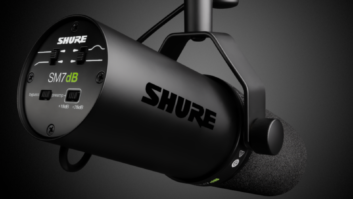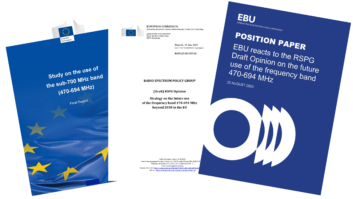The Federal Communications Commission has refused a request from Sennheiser and Shure to preserve a vacant channel in the TV bands for wireless microphones use.
It upheld its previous decision despite a petition from the two wireless mic manufacturers. The outcome is a win for TV broadcasters and the National Association of Broadcasters, who had argued against the idea.
The FCC wrote, “Although we have concluded that we should not proceed with the proposals in this docket, the commission is committed to supporting white space devices and wireless microphones and has pursued, and continues to pursue, avenues to ensure adequate spectrum availability for the important services they provide.”
This debate started when the FCC issued rules for implementing its broadcast TV spectrum incentive auction.
At that time the commission recognized that there would be fewer unused television channels in the TV bands after the auction and repacking, but it anticipated that at least one channel in the UHF broadcast TV band would be available for shared use by unlicensed white space devices or wireless microphones.
Debate over how to do that ensued, with broadcasters generally arguing against the idea. They said the proposal from the FCC in 2015 to accomplish this would freeze full-power TV stations in place and hamstring their ability to expand or innovate. Broadcasters also said the proposal would require “novel engineering studies” that would be expensive and time-consuming, particularly for smaller broadcasters.
[See Our Business and Law Page]
At the end of 2020, the FCC terminated the proceeding, saying the idea of creating a nationwide solution was not practical after all.
It noted that many major metropolitan areas have no vacant 6 MHz channels; and it listed numerous steps it had taken that it said ensure that white space device and wireless microphone operations can flourish.
Sennheiser and Shure then petitioned the FCC to reverse course and reinstitute its earlier plan.
They said persevering a vacant UHF channel for wireless microphones is still the best solution; that even a non-national solution would be better than none; that the UHF TV band is critical to content creators who use wireless microphones; and that any additional burdens on TV broadcasters would not stifle innovation.
They said that any steps taken by the FCC to create elbow room for wireless services have still not provided spectrum comparable to a vacant channel in the TV band.
But on Wednesday the FCC rejected their petition.
“We reaffirm the conclusions the commission reached in the Termination Order that the steps the commission has taken in other proceedings since the 2015 NPRM provide a better alternative for addressing the needs of wireless microphone providers than through efforts to preserve a vacant channel in light of the burdens the vacant channel proposal would impose on broadcasters.”
The FCC also noted that it is considering a separate proposal to allow Wireless Multi-Channel Audio Systems (WMAS) to operate in the TV bands and other LPAS frequency bands on a licensed basis; the FCC said that if passed this too would help wireless mic users.
The 21-page ruling, which includes the commission’s detailed discussion of its reasoning, is posted on the FCC website. But the bottom line is that the previous decision stands.












